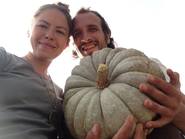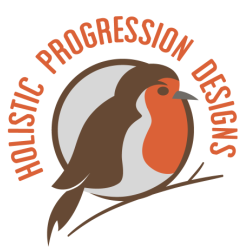 Click image to enlarge
Click image to enlarge In this blog post I share the highlights of the process and outcomes of two months of intensive work applying Permaculture design in a beautiful but challenging spot. Summarising the birth and first steps of Alişler Yurdu, which has evolved into a pioneering, sustainable and inspiring project.
Read more to see an example of how degraded land in the Mediterranean can be healed, become biologically productive and transformed into a Permaculture paradise.
1. First things first: Never underestimate the power of invisible design
One of my biggest learning and observations from my experience building, developing and managing projects in different places (including Panya and Rak Tamachat in Thailand) is that one of the main contributing factors to the success of a project is having clear and concise goals and vision. This is essential and greatly contributes to joyful and streamlined development.
Having crystal clear goals and vision is fundamental for any project. Most of you surely agree with this statement, but you would be surprised to know how often this part of the design is overlooked and ‘sacrificed’ for the sake of ‘saving time’. It might be clear in your head but bringing it together and reflecting and refining it is very powerful. My advice is: invest time in your invisible design now and you will safe time, money and effort down the road.
So, right from day one, my client and I spent several days fully dedicated to defining the vision and the goals of the project (divided in 1, 2, 5 and 10 year goals). All together they provided us with a clear action plan. Creating a project can be pretty overwhelming and having a well thought road-map in place brings a calm composure. Making the mistakes on paper, saving a lot of time, money and energy, that's what design is about.
A clear and concise outline of the project can be created with a visual that includes the vision, overall goals and a mind map that ties everything together. In my experience, this can become invaluable when explaining your project to others, externally reflecting the internal and showing that there is long-term thinking and organisation behind the project idea. When someone can understand your project easily, she/he will subscribe and share that excitement with others and attract different types of support.
An ecosystem is always in motion, alive and ongoing. So are your project's goals and vision. I always like to make clear that keeping these documents relevant and realistic is a healthy and a wise use of time. I suggest revising them every six months, as new information, circumstances and opportunities emerge.
2. Now that you know where you are heading, lets design how to get there.
To kick start the project and have the owners living on the land comfortably was a key goal during my two months in Turkey. I would leave the project reassured that they had their basic needs covered. My focus for the initial actions was to concentrate on the big picture patterns, creating space for the client to fill in the details over time. I created an interconnected and multi-functional design with low input systems that would provide multiple yields.
A. Securing water:
Catching and storing water with swales and ponds, planted downhill with trees and perennials can dramatically improve rainwater infiltration and groundwater recharge.
| The design of swales (water harvesting ditches on contour) and ponds have multiple benefits: - The creation of microclimates. - Maximization of the number of edges. - The establishment of tree-based systems. - Provides space for the application of aquaponics techniques. - Identification of appropriate areas for crops. - Creation of appropriate access to connect the site in the most beneficial multi-functional way saving much time and energy. |
Benefiting ecosystems through the creation of food forests. Food forests deliver many of the same ecosystem services that ‘natural’ forests do and provide for human needs. In addition to the water, soil, and climate benefits they serve as habitat for many kinds of life, and their diversity is much higher than annual agriculture.
C. Shelter:
Appropriate positioning and design of buildings and sustainable affordable construction methods.
3. Where do we start?
Water is the backbone of land-based Permaculture design and the best place to focus early on, especially if you are in the dry Mediterranean region. So the strategies to secure water were the first ones to be implemented. That way the site would as soon as possible become totally autonomous for water. We implemented the earth works design and a bore well was drilled.
With these key elements complete, my client moved onto his land. My initial consultation and implementation work was complete, achieving our agreed goal. My job was done, but my client’s journey towards his vision had just started.
Over the last three years I have kept in touch with this exciting project, keen to follow their progression. The amount of work they have done in less than three years is impressive: Lots more trees have been planted, they have created shelters for their horses and chickens, built accommodation for volunteers, course participants and bed and breakfast rentals. They have set up organic vegetable production systems, tweaked the dome heating system, reshaped the natural swimming pool and much more.
Thanks to their clear vision and goals, their high motivation and continuous observation and evaluation, they are now noticing an increase in the diversity of plants, volunteer trees, animals and insects. Shade, water, crops and animal yields have increased, as well as interest in Permaculture design by other people from Turkey and around the world. Visitors and volunteers that stay at Alişler Yurdu contribute to this journey of success, helping maintain, grow and create projects every year from March until September. Would you like to hear what these volunteers are saying about Alişler Yurdu? Click here.















